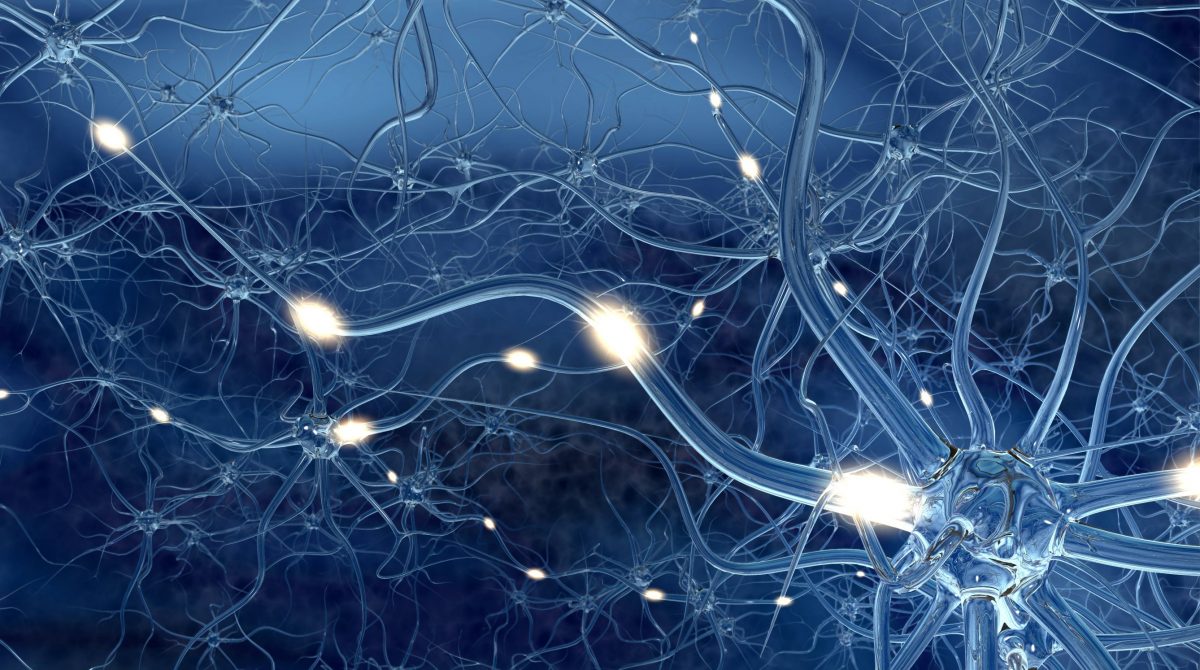It can be difficult to determine which sources of information are accurate in our modern instant-access, all-voices-have-a-platform world. Which data tells the full and accurate story, and how can we know? The answer is, fairly simply, due diligence. Empirically validated research gives us some pretty clear evidence about the causes, or etiology, of autism spectrum disorders (ASD). From the sensational claims on the internet to the most up-to-date scientific research, what you are about to read is an unabashedly honest examination of what we know, and what we don’t. It may even help you better understand and support yourself, your loved ones, or your community members. Please read this brief article about how to distinguish truth from the trash when searching for reliable information.
What is Autism?
Autism is a neurodevelopmental diagnosis characterized by atypical development in the areas of social communication, social interaction, and restricted or repetitive behaviors. Symptoms must be present before the age of 3 years in order to qualify as an autism spectrum disorder (ASD), but diagnosis can occur at any age, as long as symptoms were present in early childhood. People with autism, or to use the term many on the spectrum prefer, autistic people, may exhibit a very wide range of intensity and number of symptoms, and like no two neurotypical people are the same, so are no two neurodivergent people the same.
Many or most autistic people lead independent, highly productive lives like neurotypical people, and many have revolutionized their fields. Some autistic people, however, rely on comprehensive community and family support and may exhibit a lack of functional and adaptive skills, have extreme difficulty with communication, and/or exhibit destructive, self-injurious, and/or aggressive behaviors. Like any subgroup of people, there is no single way to describe the “average” autistic person.
What Doesn’t Cause Autism?
Credible, objective sources have evaluated the claims of these most pervasive theories prevalent on the internet about the etiology of ASD, and these claims have been confirmed through replication and from multiple angles time and time again. Each claim is described along with scientific and/or everyday support for why the claim is false. A caveat: There are usually exceptions to the rule, and in some cases, a confluence of environmental stimuli may help to “turn on” the symptoms associated with ASD when a genetic disposition for ASD is present. The intention of this section is to say that none of these leading theories alone or in totality can be attributed to causing ASD.
-
- Psychological trauma:
Certainly, psychological trauma can result in a very substantial amount of behavioral, cognitive, and even physiological problems that are not the result of genetic or natural causes. However, ASD by definition must be present prior to the age of 3 years. While psychological trauma can certainly occur prior to age 3, a diagnosis of ASD should exclude the potential results of a traumatic experience. People with ASD experience trauma and trauma may exacerbate the symptoms of ASD, but the two diagnoses are categorically separate.
-
- Heavy metals:
Chelation is a valid medical intervention used to remove toxic levels of heavy metals from the body in cases of metal poisoning. It should always be performed in a medical setting by licensed medical professionals, as it can be fatal if improperly administered. Chelation was first supported by a group of practitioners whose confirmation bias misled them to believe they observed changes in the performance of autistic participants who received chelation therapy. These studies were later debunked, but the myth persisted. Following multiple deaths and serious illnesses associated with chelation therapy in children with autism, the protocols based on the group of practitioners who first championed its use were dismantled.
-
- Food allergy/Gastrointestinal disorder:
While food allergies and gastrointestinal (GI) disorders have not been shown to cause ASD, there is some evidence to support that untreated food allergies or GI disorders may exacerbate symptoms associated with ASD, namely behavioral challenges. Autistic people may be more likely to experience food allergies than the general population (11% versus 4% according to one study), but there is no causal evidence to say that one causes the other.
-
- Vaccines:
You’ve heard this one before. The subjective evidence behind vaccines as a cause of ASD stems from the timing of regressive disorders and the timing of childhood vaccines. When regressive ASD occurs, it tends to occur between 15 and 18 months of age. Though childhood vaccines begin the day of birth and children receive more than 20 vaccinations by 18 months of age according to Center for Disease Control (CDC) guidelines, the measles, mumps, and rubella vaccine (MMR) is first administered during the typical regression period of around 15 months. But even in these cases of sudden and severe regression, signs of ASD were often present but overlooked during development. Furthermore, regression also may occur in children without ASD. So, what made people believe vaccines cause ASD? Thimerosal, a mercury-based preservative that was previously used in vaccines and has since been removed and replaced due in part to pervasive public misconceptions contains ethylmercury. Ethylmercury is a safer form of mercury found in common food items such as fish, called methyl mercury. Forms of mercury can be found in the air, rock, dirt, types of dental fillings, appliances, automotive parts, electronics, lightbulbs, pharmaceuticals, beauty products, etc. The initial “evidence” for a relationship between vaccines and autism stemmed from a 1998 research paper that has since been retracted due to selection bias, improper funding by lawyers of parents suing vaccine manufacturers, and unethical treatment of child participants. In fact, the author of the study, Andrew Wakefield, was barred from practice and his work was discredited. The largest outbreak of measles since the introduction of the measles vaccine occurred due to a large unvaccinated population based on parental fears of vaccines and a linkage to ASD. In fact, children are far more likely to be injured or die from preventable diseases if unvaccinated than they are to be hurt by a vaccine. Furthermore, the common cold puts a higher burden on the immune system than a recommended vaccine dose.
Then What Causes Autism?
Now that we know what doesn’t cause ASD, what causes it? Is there something we can definitively do differently to prevent it? In short, genetics is the biggest factor in the presentation of ASD. ASD can be acquired through brain injury due to medical illness, mitochondrial disorder, or traumatic brain injury. But the most common, known way of acquiring ASD is, well, to be born with it. It is well documented that ASD does often require activation of sorts from prenatal, natal, and neonatal environmental factors. However, predictable genetic and inherited traits are related to the expression of ASD including advanced parental age, the occurrence of ASD in siblings or family lines, psychiatric history in the family, maternal mental health, exposure to toxins in utero, lack of fatty acids during pregnancy, and other factors. Evidence for the genetic cause of ASD is plentiful and robust. Some research has shown that impaired pupillary light reflex (PLR: an involuntary pupil response to light) in babies predicts ASD reliably, and reliable physical dysmorphology Classifications for ASD and facial structure analysis. Classifications have been associated with various outcomes or symptomology.
Concordance rates in identical twins are the oldest and most common method for studying the genetic heritability of traits. Though variable across studies depending on gender and severity, the concordance rates of ASD in identical, or monozygotic, twins is consistently higher than fraternal, or dizygotic, twins. Because identical twins share the exact genetic code and have experienced (generally) identical prenatal environments and very similar postnatal experiences, a disorder that is 100% genetic should have a concordance rate of 100%. Likewise, a concordance rate in fraternal twins of 100% would likely indicate a strong environmental factor, since fraternal twins share only about half of their DNA like traditional siblings. In ASD, concordance rates in fraternal twins are predictably and significantly lower than in identical twins. If ASD were completely environmental and not genetic, concordance rates of twins (either identical or fraternal) should be similar, because the role of shared DNA would be insignificant in the face of their shared environment. Due to this, we know that ASD is inherited but in some or many cases relies on some unknown environmental trigger to be expressed.
Broad autism phenotype (BAP) is a group of characteristics and symptoms that do not rise to the intensity or number required to meet a diagnosis of autism but are considered to be related to the autism phenotype. Families with one or more members exhibiting BAP are more likely to have a child diagnosed with autism than those who do not.
All of these sources of evidence point to a highly genetic etiology of ASD, with the most significant being the predictability of outcomes and diagnoses including symptomology based on genetic variation at predictable gene marker locations. Additionally, some physical attributes as described above such as PLR and facial dysmorphology being predictors of ASD eliminate some of the confusion that regressive autism can cause. While there isn’t much we can do to change our genes, we can experience some comfort in the knowledge that parenting styles, lifestyles, and attachment styles are not the primary factor, or perhaps a factor at all, in the presence or absence of an ASD diagnosis. It is crucially important to relieve the stress that burdens parents when their child is initially diagnosed with an ASD, as in any diagnosis, and spreading the truth instead of myths about true causes and outcomes can eliminate a lifetime of anxiety.










